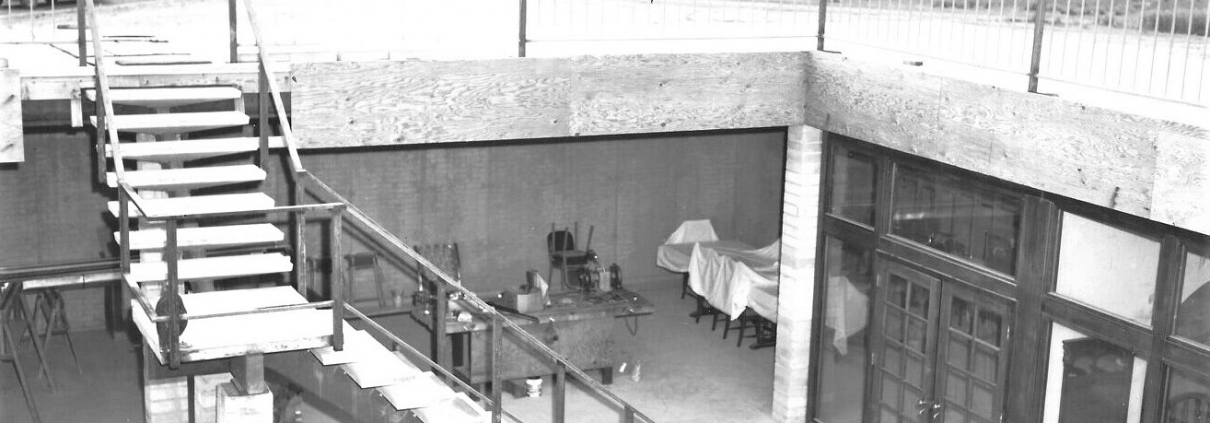Building Underground
Studies show that underground-shelters are more cost-efficient in climates that have significant temperature fluctuation and low humidity, like central and eastern regions in Iran. Earth temperatures vary much less than air temperatures in these areas, which means the earth can absorb extra heat from the house in hot hours or insulate the house to maintain warmth in cold nights. Given the huge numbers of people through time, who have lived in housing which was partially or completely underground, and the serious advantages of being below the Earth’s surface in arid zones, it is strange that nowadays, this pattern do not follow in Iran. The reasons are all social or cultural, not costs or lack of comfort. Although initial cost MAY be higher, depending upon the site and soil, but all costs of ownership and maintenance are much lower in the long run. Building underground seem problematic, because contractors and local housing authorities have little or no experience with the structures. Another reason it has become unfashionable is the perception, based upon poor basements, that underground housing is cold, wet and dark; none of which needs to be true.
There are tens of thousands of people who live underground today, throughout the globe, many in caves or dwellings constructed hundreds or thousands of years ago. More than half the people of Coober Pedy, an opal mining town in the center of the South Australian desert, live underground to survive the scorching summer heat and freezing winters. Their homes that built into caves, hills and old mine shafts, stay at a pleasant 23 degrees Celsius all year round. The interest in underground housing has been increasing since the 1970’s in US due to rapidly increasing energy costs, and social movements in 70s.
Design and construction to prevent long term moisture/dampness issues would be the big one, along with structural support of tons of soil pressure pushing down and sideways, ensuring adequate cross flow ventilation, ensuring sufficient daylight access to all habitable spaces, ensuring an alternative emergency egress route from all habitable spaces, and having a sufficient visual indoor-outdoor connection for psychological wellbeing and amenity. Cost is also going to looms very large, as the techniques that builders can use above ground to keep cost down will largely not apply underground (a little easier if you can build the house first then bury it afterwards).
The main problems that we face in underground housing can be classified in:
- The problem of construction
- The problem of water infiltration and humidity
- The problem of different substratum layers
- The problem of lighting
- The problem of ventilation
The problem of construction
Because it is frequently difficult to repair poor or badly designed features underground, it is vital that both design and construction is as good as possible. It depends on ground conditions. It depends on what the groundwater conditions are like. It depends on how deep we want to go. It depends on how big a house we want. It depends on how many modern conveniences we have in mind. Humidity levels may increase in earth-sheltered houses during the winter, which can cause condensation on the interior walls. Installing insulation on the outside of the walls will prevent the walls from cooling down to earth temperature, but can also reduce the summer cooling effect of the walls. Careful planning by a designer familiar with earth-sheltered home design can keep humidity from becoming a problem. There is a lot of excavation, retaining walls, and underground waterproofing that needs to be done. This is very specialist work, and it needs to be done well in order for it to be reliable. Basically, it’s masonry and concrete construction, and fairly heavyweight at that. In cold climates you need to get the insulation right as well, although to an extent, the earth itself will provide some insulation. It also needed to be ensured that the ventilation strategy is effective, otherwise we get condensation. This can be much more difficult to manage in an underground house because generally there aren’t as many windows. So, if we wanted to build underground and hit rock, the cost would get way high. Septic system will probably require a sewage pump to lift any waste to or near the surface to channel into a public system or a septic tank/drainage field system. Probably less expensive than stick built due to no siding, windows or roof. There are special problems too: Plumbing and waste removal will be unconventional, it need a custom system for ventilation and DEHUMIDICATION to include reheat. Without this we will have high humidity which will be an unhealthy condition and can promote mold growth.
The first consideration is location. Going underground is a choice that heavily depend on the location. Site selection is critical to the costs and construction. Site’s topography and microclimate determine how easily the volume can be dig out, and the walls can be surrounded with earth. A modest slope property requires more excavation than a steep one, and a flat site is the most demanding, needing extensive excavation. A south-facing slope in a region with moderate to long winters is ideal for an earth-sheltered building. South-facing windows can let in sunlight for direct heating, while the rest of the house is set back into the slope. In regions with mild winters and hot summers, a north-facing slope might be ideal.
If the land is on a hillside, one wall can be exposed and the rest of them underground; that’s a lot of benefits. The roof, walls and floors would have to be waterproof. HVAC would be considerably smaller and less expensive to run, depending on how much soil will protecting the walls. On a hill, the utilities, including water, sewer, electric could come through the exposed side. In general, an underground house on level ground will be much more expensive. On a hillside, though, with the right design and careful planning, we can get most of the benefits with few of the problems.
The type of soil at the site is another critical consideration. Granular soils such as sand and gravel are best for earth sheltering. These soils compact well for bearing the weight of the construction materials and are very permeable, allowing water to drain quickly. The poorest soils are cohesive, like clay, which may expand when wet and has poor permeability. The groundwater level at the building site is also important. Natural drainage away from the building is the best way to avoid water pressure against underground walls, but installed drainage systems can be used to draw water away from the structure.
The construction materials for each earth-sheltered structure will vary depending on characteristics of the site and the type of design. Materials must, however, provide a good surface for waterproofing and insulation to withstand the pressure and moisture of the surrounding ground.
Concrete is the most common choice for constructing underground buildings, because it strong, durable, and fire resistant. Concrete masonry units (also called concrete blocks) reinforced with steel bars placed in the core of the masonry can also be used, and generally cost less than cast-in-situ concrete.
Wood can be used in earth-sheltered construction for both interior and light structural work. Steel can used for beams, bar joists, columns, and concrete reinforcement, but must be protected against corrosion if it is exposed to the elements or to groundwater. It is also expensive, so it must be used efficiently to be economical as a structural material.
The problem of water infiltration and humidity
Waterproofing can be a challenge in earth-sheltered construction. Keep in mind these three ways to reduce the risk of water damage in your house: choose the site carefully, plan the drainage both at and below the surface of the house, and waterproof your house.
The problem of ventilation
Adequate ventilation must be carefully planned in an earth-sheltered house. Combustion appliances should be sealed combustion units that have a direct source of outside air for combustion and vent combustion gases directly to the outside.




Leave a Reply
Want to join the discussion?Feel free to contribute!